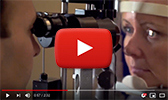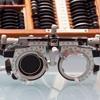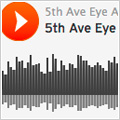Glaucoma is an eye disease that damages the optic nerve and thus, results in vision loss. Glaucoma affects approximately 2.5 million people in the US with about half of them experiencing some level of vision loss. Early in the disease, patients may not have any symptoms so it is important for everyone to see an eye doctor to be screened. While glaucoma is not curable, it can be managed through medications, laser and/or surgical procedures. The doctors of Fifth Avenue Associates have a wealth of experience in treating glaucoma and helping to prevent its potentially devastating consequences.
What is Glaucoma?
Glaucoma is the second leading cause of blindness in the United States. It is usually characterized by elevated intraocular pressure (IOP) that, if left untreated, will cause damage to the optic nerve and permanent vision loss. There are many types of glaucoma.
Primary Open Angle Glaucoma
This form of the disease occurs when there is either insufficient drainage or overproduction of the internal fluid of the eye, the aqueous humor. The painless buildup of fluid causes a rise in IOP, which over time, can lead to optic nerve damage and vision loss.
Narrow Angle Glaucoma or Closed Angle Glaucoma
This form of glaucoma occurs when the drainage system of the eye becomes blocked, preventing the normal escape of the aqueous humor. This can create a painful, sudden rise in intraocular pressure to a dangerous level, and permanent vision loss can occur within minutes.
Normal Tension Glaucoma
This relatively uncommon form occurs when optic nerve damage takes place in the presence of seemingly normal IOP measurements. Detecting this type of glaucoma requires specialized testing.
What are the risk factors of Glaucoma?
While glaucoma can occur in younger patients, it most often occurs in adults over the age of 40. Also, due to potential higher genetic susceptibility, African-Americans are at a higher risk of developing open angle glaucoma than Caucasians. The disease often develops at an earlier age in this population as well. Glaucoma is passed from generation to generation; so family history is an important risk factor. Medical conditions such as diabetes and hypertension are risk factors as well as people with high nearsightedness (myopia), those who have experienced blunt eye trauma, and those with thin corneas.
What are the signs and symptoms of Glaucoma?
Open angle glaucoma is often a silent disease, as no pain or discomfort occurs in most patients. Often, the first sign of a problem occurs when a person begins to lose side (peripheral) vision as a result of optic nerve damage. For this reason, it is important to have a complete eye exam every one to two years if you have any of the above risk factors. Glaucoma usually affects both eyes simultaneously, but the degree to which may be different.
With narrow angle glaucoma, a sudden increase in eye pressure may occur, leading to sudden, intense eye pain, blurry vision, halos around lights, nausea and vomiting. If you experience these symptoms, make sure you see an ophthalmologist or visit the emergency room immediately so steps can be taken to lower your intraocular pressure to prevent damage.
How is Glaucoma diagnosed?
Your doctor will check your eyes for glaucoma during your routine eye exam. A device called a tonometer will be used to check your intraocular pressure. If your eye pressure is higher than the normal range, then further testing may be indicated. A visual field test may be performed to see if your peripheral vision has been affected as a result of the increased pressure.
Once glaucoma is diagnosed, the doctors of Fifth Avenue Associates consistently use the most advanced, state-of-the-art technology to help monitor the progression of the disease. Optical Coherence Tomography (OCT), Scanning Laser Polarimetry (SLP), and Confocal Scanning Laser Ophthalmoscopy are often used to establish baseline images and measurements of the optic nerve and internal structures of the eye. Then, at each follow-up visit, images and measurements with the same devices are taken to ensure that the disease and damage have not progressed.
How is Glaucoma treated?
The doctors of Fifth Avenue Associates have extensive experience in the treatment and management of glaucoma. Depending upon the type and severity of the disease, prescription medications, laser procedures or surgery may be recommended. There are a variety of prescription medications available today to help lower intraocular pressure and prevent optic nerve damage in glaucoma patients. Your doctor may prescribe one or a combination of medications based on their side effect and efficacy profiles.
Glaucoma: Introduction
Glaucoma: Testing
Glaucoma: Treatment Overview
Glaucoma: Awareness
Glaucoma: Risk Factors


Fifth Avenue Associates
1034 Fifth Avenue
New York, NY 10028
Phone: 212-570-0707
Fax: 212-570-0555
Email: [email protected]

Dry Eye Syndrome
Cataracts
Droopy Eyes
Bags Under The Eyes
Ptosis
Ectropion/Entropion
Eyelid Cancers
Refractive Surgery
Thyroid Eye Disease
Tear Duct Conditions
Pediatric Eye Care
Blepharospasm

For contact details and patient forms please click below.

Your gift can help Virtue Foundation tackle critical issues and make a positive impact around the globe.

Click here to view and listen to the latest Fifth Avenue Associates audio/Video Clips